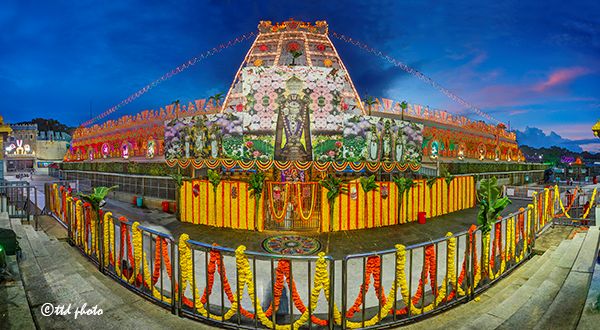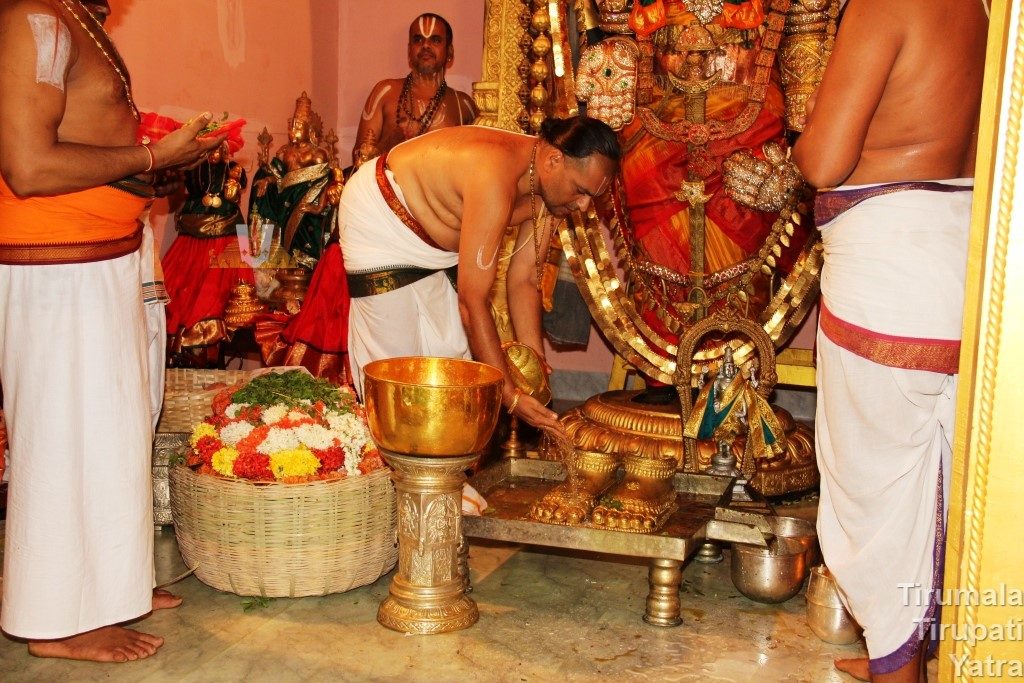Poolangi Seva Tomala Seva, which takes place every Thursday evening, is called Poolangi Seva (Garlanding Service). This takes place completely in solitude. Priests adorn the main deity from head to foot with the flowers brought by the Jiyyangars. The Lord appears as though he has worn a flower dress. The visitors are enraptured by the Read More
Tag: Thomala Seva
Thomala Seva – Tirumala
Thomala Seva The decoration of the Main Idol, Utsav Moortis, and other Idols with garlands and Tulasi (basil) garlands in Ananda Nilayam of Tirumala is called ‘Thomala Seva’. The style in which garlands are decorated dangling from the shoulders is called ‘Thomala’. The word ‘Tholmala’ is derived from the Tamil word ‘Toduttamalai’. Those who pay Read More


